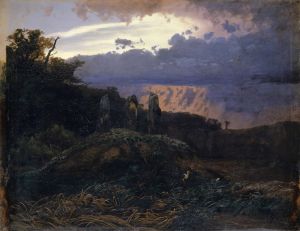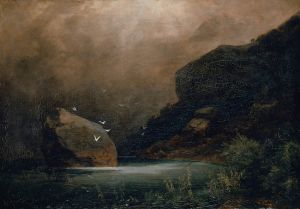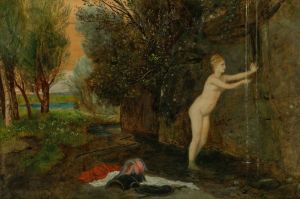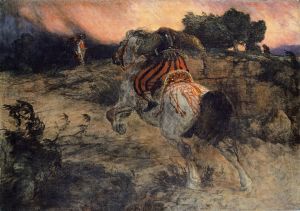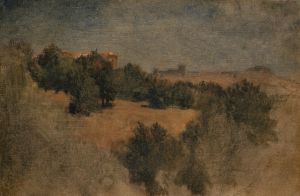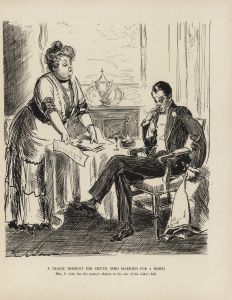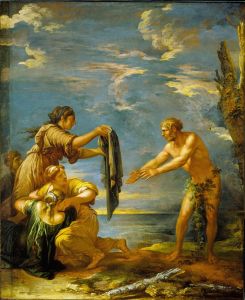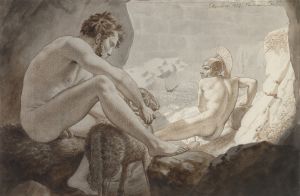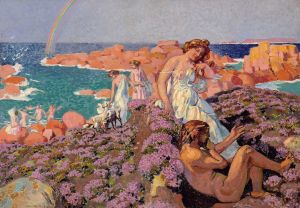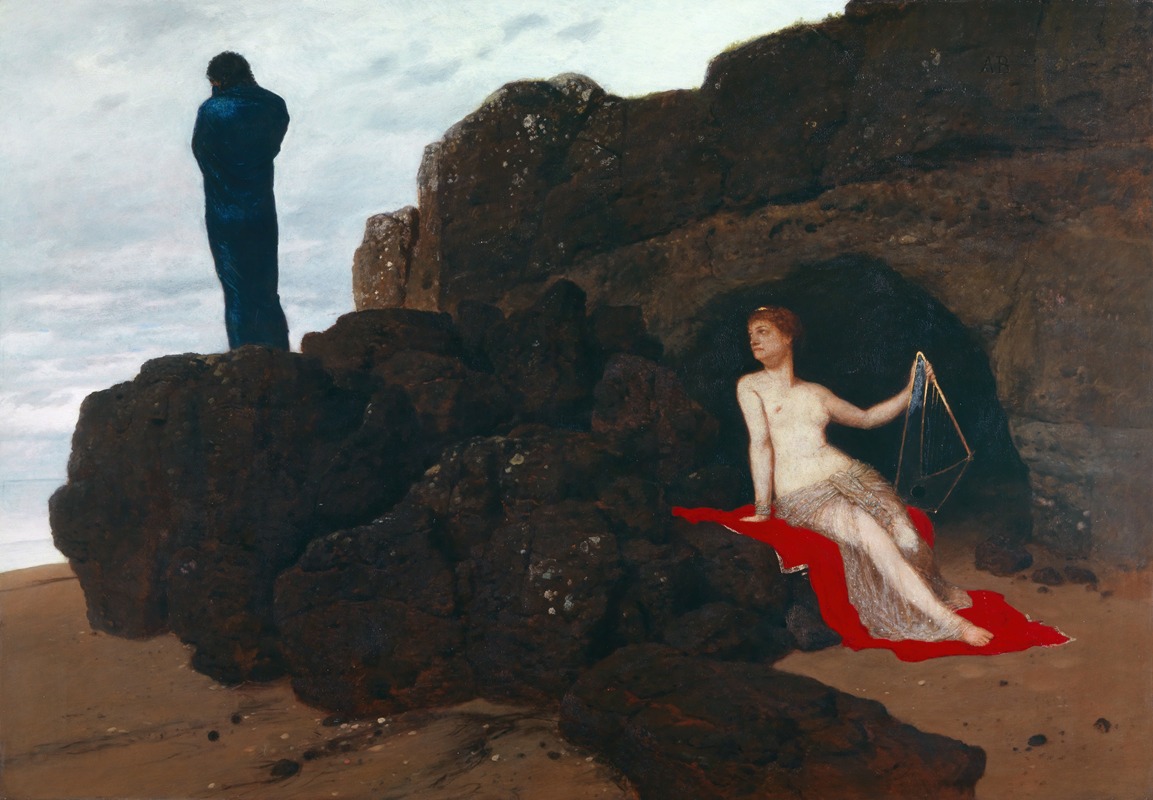
Odysseus and Calypso
A hand-painted replica of Arnold Böcklin’s masterpiece Odysseus and Calypso, meticulously crafted by professional artists to capture the true essence of the original. Each piece is created with museum-quality canvas and rare mineral pigments, carefully painted by experienced artists with delicate brushstrokes and rich, layered colors to perfectly recreate the texture of the original artwork. Unlike machine-printed reproductions, this hand-painted version brings the painting to life, infused with the artist’s emotions and skill in every stroke. Whether for personal collection or home decoration, it instantly elevates the artistic atmosphere of any space.
Arnold Böcklin's painting "Odysseus and Calypso" is a notable work by the Swiss symbolist artist, created in 1883. Böcklin, known for his imaginative and often fantastical compositions, drew inspiration from mythology, literature, and the natural world. This particular painting is based on a scene from Homer's epic poem, "The Odyssey," which recounts the adventures of the Greek hero Odysseus.
In "The Odyssey," Odysseus is detained on the island of Ogygia by the nymph Calypso, who falls in love with him and wishes to make him her immortal husband. Despite her offers of immortality and eternal youth, Odysseus longs to return to his wife, Penelope, and his homeland, Ithaca. The painting captures the tension between Odysseus's desire for freedom and Calypso's longing to keep him by her side.
Böcklin's depiction of this mythological episode is characterized by his distinctive style, which often blends realistic elements with dreamlike or fantastical qualities. In "Odysseus and Calypso," Böcklin uses a rich color palette and detailed brushwork to create a vivid and atmospheric scene. The painting portrays Odysseus and Calypso in a lush, idyllic setting, surrounded by the natural beauty of the island. The figures are rendered with a sense of realism, yet the overall composition evokes a sense of otherworldliness, typical of Böcklin's work.
The painting reflects Böcklin's interest in the themes of love, longing, and the human condition, as well as his fascination with the interplay between reality and imagination. His work often explores the boundaries between the natural and supernatural, the mortal and immortal, and the seen and unseen. In "Odysseus and Calypso," these themes are evident in the portrayal of the characters and their surroundings, as well as in the emotional tension that permeates the scene.
Böcklin's art was influential in the development of Symbolism, a movement that sought to express ideas and emotions through symbolic imagery and themes. His work, including "Odysseus and Calypso," has been praised for its ability to evoke complex emotions and for its technical mastery. The painting is a testament to Böcklin's skill in blending mythological subject matter with his unique artistic vision.
"Odysseus and Calypso" is housed in the Kunstmuseum Basel in Switzerland, where it continues to be appreciated by art enthusiasts and scholars alike. The painting remains an important example of Böcklin's contribution to 19th-century art and his enduring influence on subsequent generations of artists. Through his imaginative interpretation of classical mythology, Böcklin invites viewers to explore the depths of human emotion and the timeless allure of mythological narratives.






